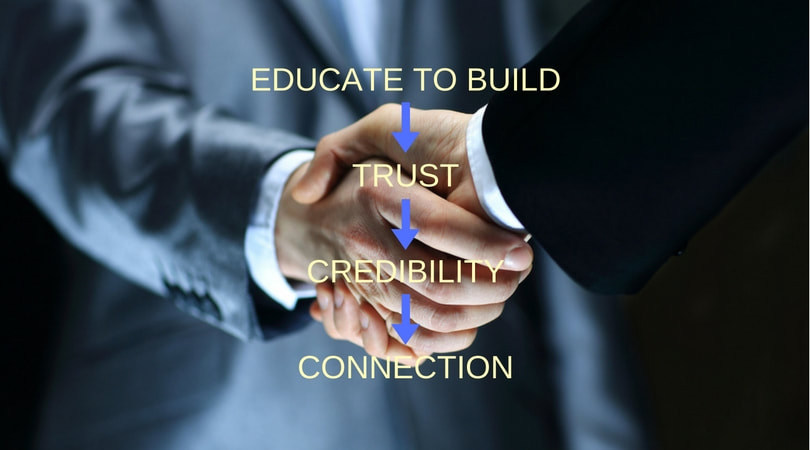|
As we develop educational products—platforms, technologies, courses—how can we ensure that we are effectively addressing the needs of learners and educators?
Qualitative research can be an useful and affordable way to ensure product quality, and fine tune deliverables to create the best learning experience possible. With focus groups and user testing, we can:
And while qualitative research can drive favorable results for individual products, the long-term big picture outcomes can be even more beneficial. For instance, A/B testing is an area where we can combine quantitative (data-driven) and qualitative (opinion, perception, motivation) research to develop improved methodologies, which can then be applied across product lines. The potential cost-to-benefit ratio here is compelling. By performing analysis on a limited set of products, we can draw broadly applicable conclusions. For instance, perhaps the research will tell us that learning outcomes improve when we include more spaced repetition exercises in our courses. Or maybe we'll find out that the language usage in our courses is too formal, resulting in disengagement. Maybe we'll find that adding a gamification element drives significant improvements in retention. Here's a key point: the successful edtech companies of the future will be validating their strategies with reliable data and user studies. There's no way around this fact. We're engaged in an evolutionary process, and the winners will be basing their decisions on reliable evidence. As an example, just this week at Mosaico Solutions we are involved in a study involving IT Directors at K-12 schools around the country. During our video interviews, we will be talking to individuals who make buying decisions at the district level. In the process, we will be learning about the technologies they are currently using, and how those technologies are deployed in the classroom. We will also be drilling down into the processes behind buying decisions—who makes the decisions, and what motivates them, constrains them, or otherwise influences these decisions. From a marketing and sales perspective, this kind of information leads to a real, evidence-based focus on the customer, as opposed to an approach that is based on conjecture. And in the long run, basing business decisions on validated, customer-centered information is the best way to grow your bottom line.
2 Comments
Educational technology has created a new environment of openness to reformulating pedagogies—a wider range of educational approaches are emerging, and we are increasingly able to validate results through assessment and data analysis. Taking a look through time, when we consider instructional strategies in the context of current and historical trends, it can be enlightening to go back to the earliest teaching and learning practices. Doing so, we find that our new instructional trends derive considerably from very old methods! Anything that we have to learn to do we learn by the actual doing of it… We become just by doing just acts, temperate by doing temperate ones, brave by doing brave ones. This quote by Aristotle is echoed in today's active learning trends: project-based learning, hackathons, apprenticeships, and other forms of experiential learning. Even before the invention of writing, we know that societies had well-developed systems for retaining information over time, and for imparting knowledge and culture to each successive generation. These systems certainly relied heavily on developing the strength and utilization of memory. Of course, the role of memory in learning hardly diminished even after the advent of writing, In the technology and information age, however, schools seem to be placing less value on memorization and memory skills. Memorization has been a core part of religious learning in particular, since humans began telling stories and developing oral traditions. Ancient cultures developed a range of methods to transmit knowledge: mnemonic techniques like the method of loci (memory palace), repetitive chanting, and codification of knowledge into symbolic representations, just to name a few. The results achieved by the ancients can seem super-human. Whether we think of a classical Greek rhapsode memorizing the epic works of Homer, or Vedic scholars mastering tens of thousands of verses, the sheer volume of content that humans memorized seems beyond enormous. Sudha Gopalakrishnan, former Director of the National Manuscripts Mission in Delhi, gives some insight into the processes used in memorizing the Vedas: ...the preservation of large portions of the Vedic corpus went on for centuries through a complex, highly codified method of transmission. Elaborate, highly sophisticated and foolproof mnemonic methods were used to instruct and memorize these compositions, which eliminated or decreased the danger of losing words, syllables or accent. The extraordinary effort of memorization emphasized correct pronunciation (akshara suddhi), correct duration of utterance (matra suddhi), and correct intonation of accents (svara suddhi). Dr. Gopalakrishnan's question is well worth considering. However, we might acknowledge that, with the steady growth of information technology, memorization is becoming less valued. If we can readily get most information on our cell phones, why memorize anything at all? The answer—development of memory skills provide students with valuable means to learn more quickly and more profoundly. We might consider that, in today's classroom, when students are expected to memorize content, they are often not taught how (i.e., effective methods) to memorize. Meanwhile, we know from experience and data that active recall approaches to learning produce some of the best educational results. Moreover, studies on competitive memory athletes has shown that people who regularly use the method of loci—a mnemonic technique that originated in ancient Greece and Rome--experience beneficial changes to the brain, a strengthening of the structures that store and recall memories. Memorization offers a specific case where students benefit from a focus on "learning how to learn." Fortunately, there are a wealth of approaches that we can draw from. Further Reading Quizzes can be a fun marketing tool for engaging your audience, driving site traffic, and gathering information on your target market. As we mentioned in our prior post on education-based marketing, quizzes can be used to help your audience reflect on their own needs and desires, particularly in relation to your product or service. And the marketing statistics on quizzes are compelling:
Capturing Leads Let's look at one example where quizzes are used to boost audience awareness, and also gather valuable data: Ramit Sethi's site, "I Will Teach You To Be Rich". Ramit's home page immediately starts the visitor off with a questionnaire designed to deliver "a custom report based on your unique strengths", which will then help you discover how to make and save more money. The quiz contains a seven personal finance questions that could reasonably be used to help develop a customized approach to your personal situation. At the end, you can fill out a contact form to receive your results, along with Mr. Sethi's prescriptions for you personally. Now, at this point, even if you opt to forego the contact form, and decide not to receive your personalized report, Ramit has gained something valuable with respect to data about his audience demographics. Customizing the Customer Experience Sephora has a variety of quizzes related to their various product lines. For instance, their Fragrance IQ quiz takes you through six questions that probe your buying motivations, your fragrance preferences, and the time of day you wear a fragrance. They then provide you with a selection that fits these preferences. Sephora doesn't require you to register in order to take the quiz, and therefore doesn't collect your contact information at this stage. However, the quiz still accomplishes a lot. First and foremost, they've made the buying decision easier, meanwhile giving customers the sense that they are getting a customized experience. Here is a similar example—the Progress Lighting—Style Quiz--a personality quiz that categorizes your style preferences, and provides product suggestions. Personality Tests Some of the most popular quizzes are personality tests. Experts have a range of opinions as to why people love personality quizzes so much.
Here are a few personality quizzes to check out! Education-based marketing is an excellent means of providing value to your customers and prospects. The educational approach moves us away from self-promoting, sales-oriented communication, toward relationships built on substance, understanding, and trust. Educational marketing can be used to:
For example, in both course development and inbound marketing, it is useful to start by developing personas to understand your audience. This understanding naturally leads to engaging content, a desirable outcome for education and for marketing. Whether you are working to achieve learning objectives, or increase brand awareness, or generate leads—you need to create content that captures your audience's attention, and gets them interacting, thinking, and actively engaging. Bear in mind—people don't want to be sold to, but they do want to be educated. Fortunately, there are a broad range of educational techniques that can be used effectively in marketing.
Quizzes can be used to evaluate your audience's knowledge, and present relevant information. Or they can be used to help define a customer's preferences, simplifying the buying process. Moreover, quizzes are great for helping people to retain information. Quizzes are a form of gamification, and other forms can be used to retain audience interest, and enhance learning. For our purposes, gamification refers to the use of game-playing principles in either education or marketing. Gamified features can play into the user's enjoyment of the simple entertainment value, or possibly other game attributes—achievement and reward (winning, leveling up), exploring, use of strategy, or even the social aspects of gaming (multiplayer games, leaderboards, etc.). Storytelling is another excellent way to promote learning and engage your audience. The best stories will allow your audience to see themselves as characters in your company's story. A common marketing story form is the case study. As we take a storytelling approach to collateral such as case studies, we can consider how these forms can be rendered to convey emotion, and how we can integrate fundamental storytelling elements such as characters, conflict, and resolution. In an earlier post, we shared Mark Shead's interesting approach to memorization, which can be used in preparation for a speech or presentation, for a school test, or possibly to learn song lyrics or a poem: The act of reading something you want to memorize fires different connections than the act of recalling. This is how you learn to memorize–your practice recalling, not repeating. This means that simply reading a particular piece of text over and over again is going to be the long road to memorization. You need to let your brain practice recalling the data so it can strengthen the same pathways that will fire when you need to remember the information later on. Essentially, Shead's approach is a very practical form of active recall learning. With an emphasis on the word "active", this pedagogical approach aims to stimulate memory, engaging the brain and energizing the physiology of the brain to learn more quickly and more thoroughly. Learning activities that promote active recall can include flash cards, quizzes, creative exercises that involve problem solving, or any activity that requires recollection of learning content. The key is that the activity relies heavily on memory, as opposed to, for example, reading or other forms of accessing information outside of memory. A 2013 academic study evaluated ten learning techniques, and ranked them for effectiveness. Practice testing and distributed practice came out best. followed by elaborative interrogation and self-explanation. Less effective learning methods were highlighting, rereading, and summarization/note-taking. All of the high rated techniques involved strengthening memory along with active thinking. Practice Testing Notwithstanding the over-reliance on high stakes testing in US public education for evaluation purposes, low stakes practice testing is a highly effective learning strategy. The study authors provide a possible explanation of the mental processes involved: Attempting to retrieve target information involves a search of long-term memory that activates related information, and this activated information may then be encoded along with the retrieved target, forming an elaborated trace that affords multiple pathways to facilitate later access to that information Distributed practice
Distributed practice involves learning steadily over time, as opposed to "binge learning" or procrastinated cramming. Why does it work? "[One} theory involves reminding; namely, the second presentation of to-be-learned material serves to remind the learner of the first learning opportunity, leading it to be retrieved, a process well known to enhance memory." Evidence shows, it is best if this practice involves active recall exercises and problem solving. This type of active, distributive memory reinforcement is a way to work with the brain's natural processes to achieve superior learning outcomes. Further reading: Mosaico Solutions is working in partnership with Amplify Research Partners to provide qualitative market research and user testing services to our clients. Qualitative research involves direct interaction with consumers and end users, with an eye toward understanding opinions and motivations. Whether through focus groups, surveys, or individual interviews, research can help us understand the process behind buying decisions, or it can be used to evaluate product quality and/or effectiveness. Looking at educational product development, for example, qualitative research can provide numerous benefits in terms of product quality. We can evaluate strong and weak points, explore known issues in more depth, and fine tune deliverables to create the best learning experience possible. For any type of consumer product or service, from food and clothing to technology to financial services, qualitative research can drive increased revenue and enhanced customer satisfaction. A key variable in any qualitative project is recruiting a group of participants/respondents that will provide accurate, representative, and actionable information. We recently put together a white paper, Qualitative Research: 5 Recruiting Strategies that Get Results, which you can download here: We hope you enjoy reading the white paper, and invite you to contact us any time if you would like more information!
by Scott Johnson
Here's a simple quote generator that I made for the coding class I am taking. Enjoy!
Do you have the patience to wait till your mud settles and the water is clear? Can you remain unmoving till the right action arises by itself?
- Lao Tzu
When using instructional approach directed toward mastery learning, context is key to achieving superior results. In particular, individualized instruction is key for building strong foundations of knowledge and skill. Educational technology is broadening the possible applications of mastery learning. For instance, mastery learning has always tended to get better results with smaller groups of students. Now, personalized and adaptive learning technologies are making it feasible to implement mastery learning in larger class sizes. Mastery learning requires students to master each component unit within a course, before moving on to the next level of learning. Derived from the work of Harold Bloom, mastery learning relies on small learning units, regular assessment, and remediation throughout each unit. Instead of progressing through a course at a fixed pace, students progress at their own pace. In principle, students build a stronger foundation of learning at each level, leading to better performance over the long term. In a personalized online course, frequent assessment and remediation (branching scenarios) can be built into the course to satisfy the mastery requirements. To ensure that a personalized or adaptive course meets mastery learning standards, the concept of a passing grade needs to be modified accordingly. Generally, mastery requires a minimum 80% assessment score to move the learner to the next lesson level. Looking at other contexts where mastery learning is most effective:
One big advantage of mastery learning is the impact on retaining learner participation from start to finish of a course. The impact can be substantial for courses that continually build on prior knowledge, such as in mathematics. This video takes a look at an approach using mastery learning in a flipped classroom: The internet provides us with a wealth of resources for developing improved methods of learning. This includes better ways to assimilate information, and also ways to make use of our learning. "Transfer learning" is a term that is becoming increasingly popular, primarily due to its role in machine learning. For a technical overview of transfer learning, visit this article by Karl Weiss et al. in the Journal of Big Data: A survey of transfer learning. The term is starting to show up more frequently in relation to human learning as well. Michael Simmons takes a look at one of the most creative minds in business today, and seeks to explain--How Elon Musk learns faster and better than everyone else. His answer? First, Musk is an exceptional worker and student. But more important is his drive to learn across the spectrum of disciplines. Musk is also good at a very specific type of learning that most others aren’t even aware of — learning transfer. Simmons goes on to say that Musk's genius lies in his ability to deconstruct knowledge into fundamental principles, then reconstruct those principles in other fields. Looking at possible ways to apply transfer of learning concepts into educational curriculum, Larry Ferlazzo provides us with five strategies in the video below. Mr Ferlazzo does a great job of deconstructing the fundamental principles of learning transfer, and then gives us some practical ideas for student exercises. Shifting directions a bit, here is an interesting approach to memorization. Mark Shead deconstructs a fundamental principle of the memorization process: The act of reading something you want to memorize fires different connections than the act of recalling. This is how you learn to memorize–your practice recalling, not repeating. This means that simply reading a particular piece of text over and over again is going to be the long road to memorization. You need to let your brain practice recalling the data so it can strengthen the same pathways that will fire when you need to remember the information later on. Shead provides a memorization process that is easy to learn, and probably effective for most people. Give it a try!
Educational trends from K-12 to the business world are favoring personalized learning strategies. In The Atlantic, Tim Newcomb in asks, "Will Personalized Learning Become the New Normal?" The article focuses on Rhode Island's efforts in K-12, and starts out with a good definition of personalized learning: "Broadly speaking, personalized learning tailors the instruction, content, pace, and testing to the individual student’s strengths and interests, using technology, data, and continuous feedback to make that customization possible." There is big money going into personalized learning, with backing from the Chan Zuckerberg Initiative and the Gates Foundation. At this stage, the funding is still very research-oriented, with a focus on generating data in real classroom situations. The new statewide programs will expand on what has been, until now, a limited research effort: Existing research on personalized learning is limited in both depth and scope, and often tied to smaller efforts. According to Education Week, the most comprehensive study to date was conducted by the Rand Corporation in 2015, studying how personalized learning shaped the learning of 11,000 students across 62 schools. Sometimes it's helpful to realize that edtech is still in its very early stages when it comes to rigorously testing strategies. Meanwhile, here is some quick reading on positive results using educational technology:
Donald Taylor, a leading L&D analyst, recently conducted a survey of L&D leaders and found that the #1 growth area in the future is not MOOCs or Video, or even mobile learning – it’s the topic of personalization. We now live in a world where each employee’s learning needs are unique to them, and while we should architect a meaningful set of programs around macro and micro-learning for them, they want to learn when they want in the most natural way possible. Today learning is about “flow” not “instruction,” and helping bring learning to people throughout their digital experience. |
Intelligence AmplifiedArchives
April 2023
CategoriesRead our magazine on Flipboard!
|










